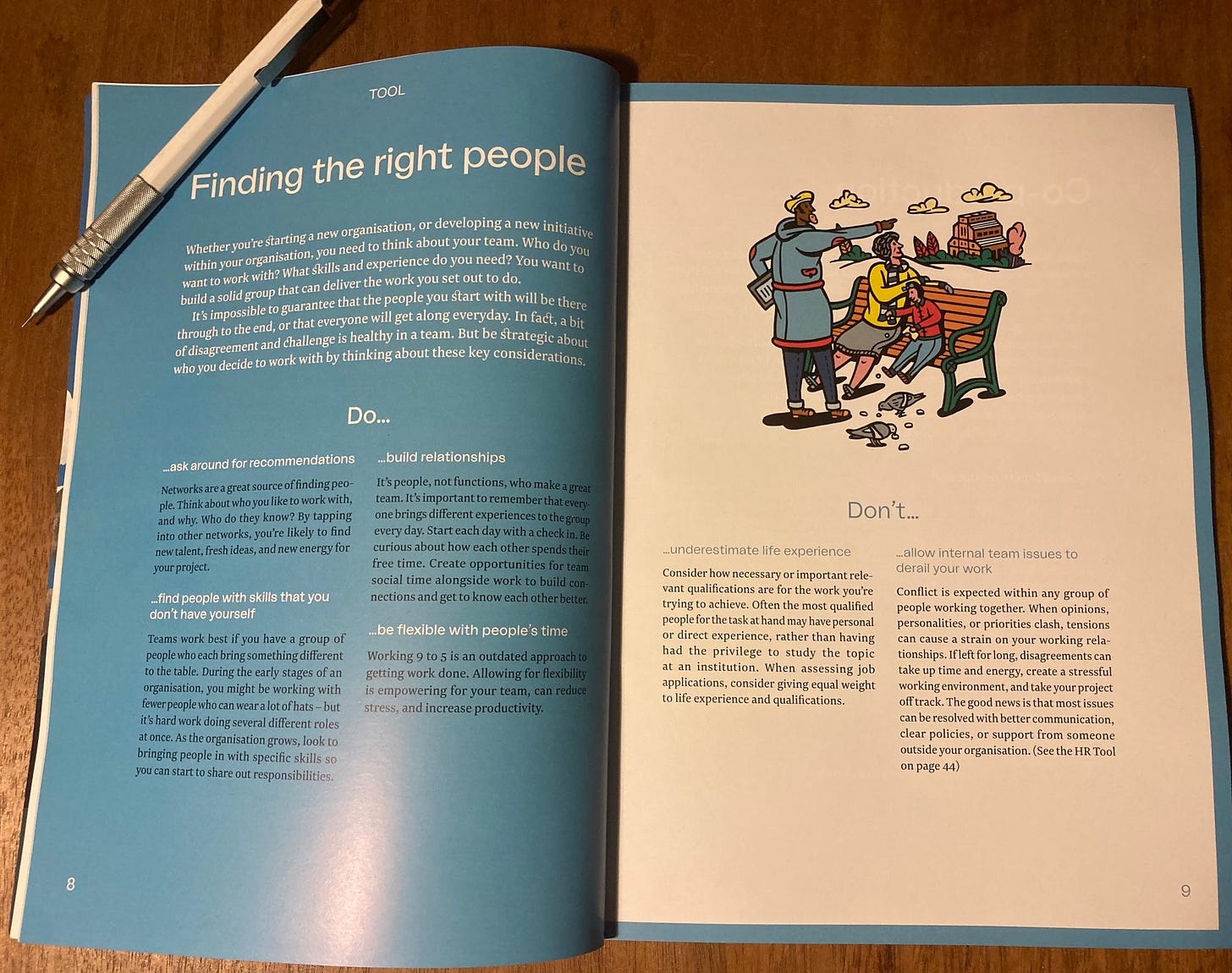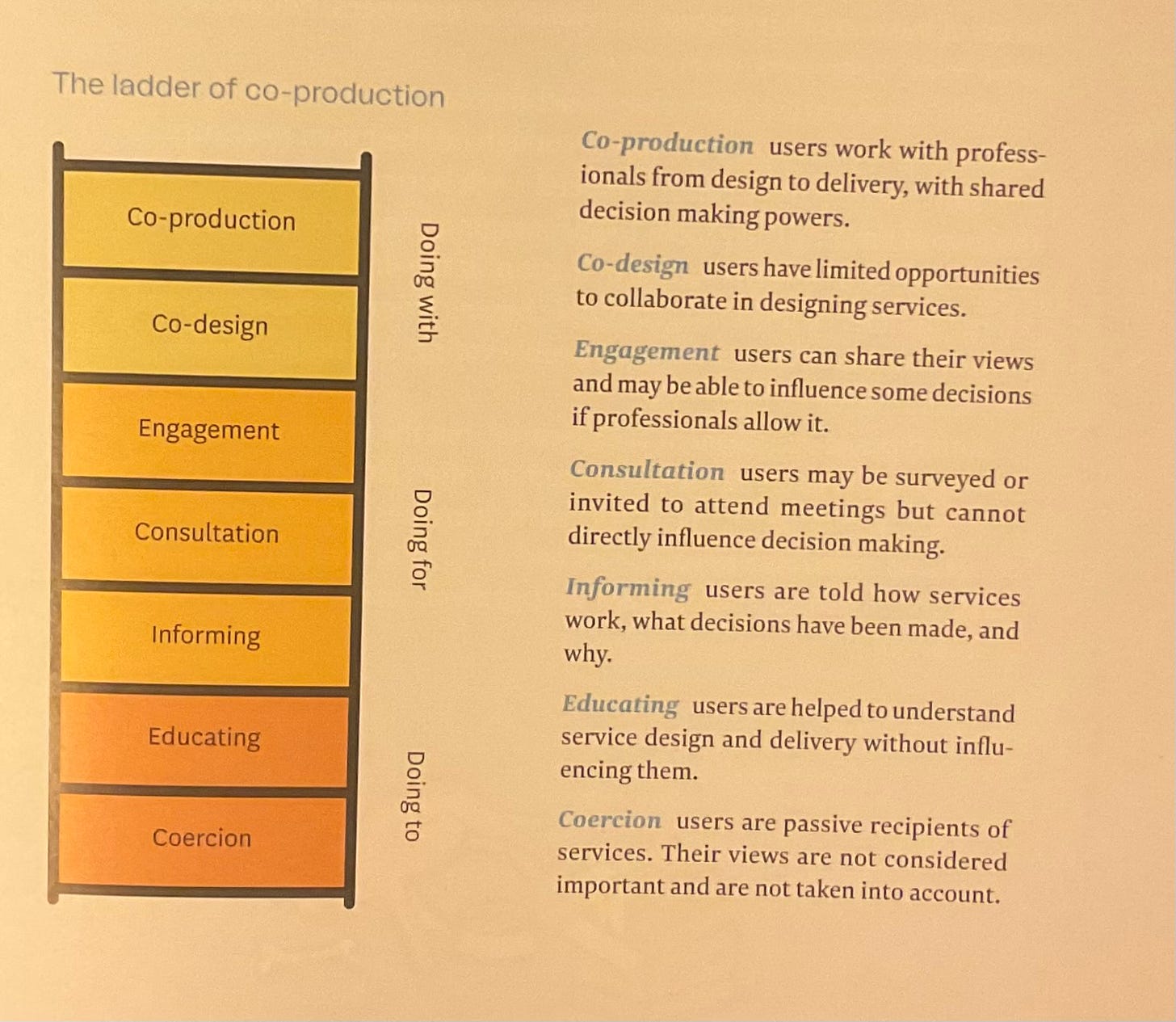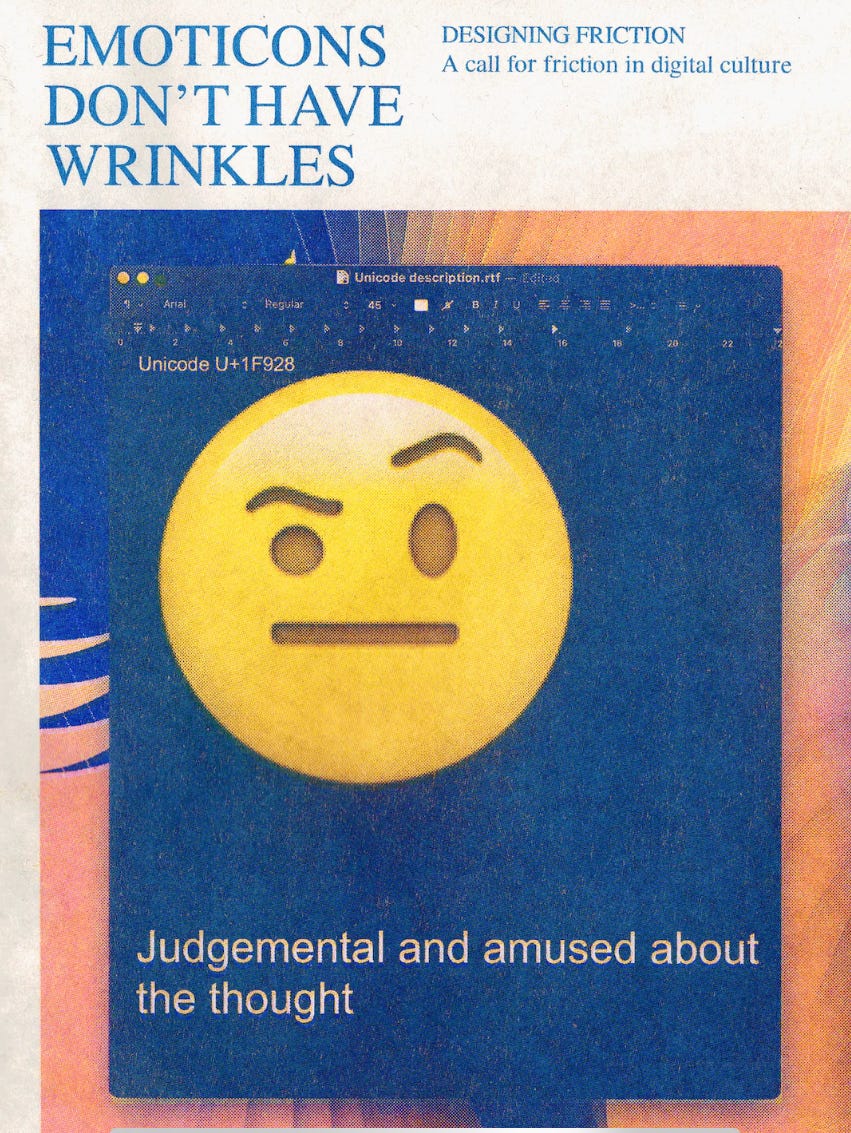19 February 2024. New economy | Digital design
Building the democratic local economy // Designing in digital friction
Welcome to Just Two Things, which I try to publish three days a week. Some links may also appear on my blog from time to time. Links to the main articles are in cross-heads as well as the story. A reminder that if you don’t see Just Two Things in your inbox, it might have been routed to your spam filter. Comments are open.
1: Building the democratic local economy
The magazine Stir to Action, and the project that sits behind it, has been one of the most effective popularisers in the UK of the idea of community economics and community wealth building.
This is Stir’s ‘mission’ (though it doesn’t use this word):
We work to create a more democratic economy in workplaces and communities, in particular through new infrastructure, business support, research and policy, and partnerships with local government.
Curiously in the digital age, the project started as a print magazine, and over the decade since then this has been used as a platform to build a programme of talks, events, and festivals to build networks and spread information and expertise across the sector. Somewhere along the line it survived a fire that destroyed its offices in Bridport.
So this is a good moment to write about one of their latest projects, The ABC of the New Economy. Here’s a section from the introduction:
As a ‘primer’ it features a series of tools, models and stories about how we can tackle the cost of living crisis and a broken energy system at the roots, transform and unfair housing market, reverse the social care crisis, and remake the way we produce and consume our food.
Obviously that is quite a big agenda, and you might think that a 72-page primer might not make much of a dent in it. But you have to start somewhere, and one of the ways they have chosen to start is by giving away the ABC to any organisation that thinks it might be able to use it.
(Photo: Andrew Curry. CC BY NC SA 4.0)
The business model here is that they have raised the publishing and printing costs from supporters, so they can afford to give it away. Triodo Bank has also contributed. (Disclosure, as they say: I made a donation to the fund.)
Like all of Stir’s publications, it is well designed. I have included a couple of spreads below to give you an idea of the look and feel.
In summary, it is designed to take you through the steps needed to set up an alternative new economy organisation. The four sections are headed:
Start your organisation
Structure your organisation
Run your organisation
Finance your organisation.
To do this, the ABC includes short explainers, lists of ‘dos and don’ts’, guides to terminology, lists of supporting organisations (such as ethical banking alternatives, crowdfunding platforms, and so on) and examples of organisations that are doing it in practice.
I’m not going to work through it in detail here, but I can give a flavour of it by sharing some of the content that has wider value in terms of progressive principles and practice.
(ABC of the New Economy. Photo: Andrew Curry. CC BY NC SA 4.0)
A good place to start with this is the 12 principles that Stir has developed in the support of local economic development, based on their experience of, and research into, how to do this.
I’m not going to go through all 12 principles here, but an important part of this is thinking about community assets as “community infrastructure” and building local institutional capability to make the most of these, as well as making more of the non-profit sector in local economic development, which often, in the UK, runs on an axis between local authorities and for-profit businesses in the local area.
Here’s some of the principles:
Focus on transforming the underlying economy, not simply on alleviating the most immediate problems caused by the economic system.
Democratic ownership of business can share equity, control, and accountability across communities, which can give everyone a stake in the current and future economy.
Community assets are an important part of social infrastructure, but think about how you can create affordable - if not free - access to this 'civic operating system.
There are many parts of a local 'ecosystem' which can support individual initiatives to thrive. Think about creating or strengthening supply chains, community finance institutions, and membership networks.
Identify where financial resources already exist in your community, rather than depending only on external resources. It's not just those with savings who are able to contribute to local economic develop-ment, there are ways of raising money in capital-light communities or from low-income individuals.
Reading this list, of course, in the current UK context, it’s worth noting that having pursued financial policies that have all but bankrupted Britain’s local councils, our government now expects council to sell off capital assets that could help to make communities more resilient despite the relentless downward pressures on council budget. It’s the sort of policy that makes sense only if you think current government policy is a giant scheme to eviscerate public assets and hand them over to speculators.
There’s a useful section on types of non-profit organisations, and ways to raise finance. I also liked the ladder of co-production, originally developed by the National Co-production Advisory Group.
(ABC of the New Economy. Photo: Andrew Curry. CC BY NC SA 4.0)
There is also supporting materials to all of this from the Stir magazine website, which is worth looking at.
Stir to Action has published 5,000 copies of the ABC, and is in the process of giving them away. If you think a copy will help your organisation, you can get in touch with them here. You can also subscribe to the quarterly magazine.
2: Designing in digital friction
I always like manifestos, since they represent a “pocket of the future in the present”. I think this especially true of manifestos by artists, since they tend to see the world a bit differently. They are more likely to want to make the present seem strange.
So I was intrigued to come across the ‘Designing Friction’ manifesto on the It’s Nice That website. It is by Luna Maurer and Roel Wouters, with Alexandra Barancova credited as a co-author:
Designing Friction is a proposal to change the way we think when producing or interacting with digital technology.
It’s also not that long, which is also a good quality in a manifesto.
((C) Luna Maurer and Roel Wouters.)
This is their core argument, in a zine that can also be bought online:
Digital technology has long pursued the goal of eliminating friction, striving for seamlessness while trying to predict our behaviour... Unpredictability, human messiness, and unforeseen actions are all to be eliminated. We no longer buy the promise of a frictionless world. In this zine, Luna Maurer and Roel Wouters state: 'Friction is what makes us human! Friction is all we have!'
This is a summary of the argument from the zine.
With movement comes friction. The more we move and act, the more friction we encounter. The more friction there is, the more we engage and care. Friction drives our engagement... Friction is an essential ingredient that makes up our humanness and sparks human connection.
There follows six propositions that are about the way that digital design has set about removing friction from our day to day experience, which will be instantly familiar to anyone who has used a mobile phone. I’ve edited these down here.
Function and form are detached
Digital technology goes in hand with the loss of physical resistance...
Removing physical human interaction...
Each new app or innovation replaces a previously friction-laden human interaction process, David Byrne states...
Convenience and immediacy
Everything can be effortlessly and immediately accessed from behind our screens... We are facing ‘death by convenience’.
Predictability...
In creating convenience all our actions are recorded and translated into data, rendering them readable and predictable.
Loss of autonomy
... Enter AI — technology becomes omnipresent, and evolves from being a tool towards a companion with humanlike semblance and appeal. We are on the verge of committing our emotions to AI, plunging into an emotional dependency.
They also quote the philosopher Miriam Rasch as saying that “complete removal of friction means standing still”. (Rasch has written a book in Dutch called Friction – Ethics in Times of Dataism)
On the subject of friction, the BBC Bitesize website tells us:
Friction can be a useful force because it prevents our shoes slipping on the pavement when we walk and stops car tyres skidding on the road.
And I like here the idea that it is friction that keeps us grounded.
Anyway, I haven’t actually got to their proposal yet:
We like to see designing friction as a fundamental design principle when working with digital culture. Instead of following design ethics that strive to eliminate friction we suggest to not only allow, but embrace friction, facilitate it: design (products with) digital technology in a way that makes space for our humanness. Here friction is a core ingredient.
How to do this? They have some suggestions. I’m just going to share their headings here, pretty much: there’s more in the manifesto.
Discomfort: Embrace uncomfortable situations.
Time delay: Friction makes things slower and that is okay!
Engage the body: When interacting with screens we lack resistance.
Non-positive: Acknowledge the fulfillment in the non-positive.
Or, as they conclude:
Perform your unpredictable self. Design environments and situations that trigger and facilitate unpredictable behaviour. De-automise, Miriam Rasch calls it. Step out of your pattern. Do something strange.
((C) Luna Maurer and Roel Wouters.)
UPDATE: Tech bros
Maybe related, I wrote here a while ago about Marc Andreesen’s ludicrous ‘Techno-Optimist Manifesto’. John Naughton this week pointed to a critique of the manifesto at the time by Elizabeth Spiers in the New York Times. Here’s an extract:
In this vision, wealthy technologists are not just leaders of their business but keepers of the social order, unencumbered by what Mr. Andreessen labels “enemies”: social responsibility, trust and safety, tech ethics, to name a few. As for the rest of us — the unwashed masses, people who have either “unskilled” jobs or useless liberal arts degrees or both — we exist mostly as automatons whose entire value is measured in productivity.
j2t#544
If you are enjoying Just Two Things, please do send it on to a friend or colleague.







